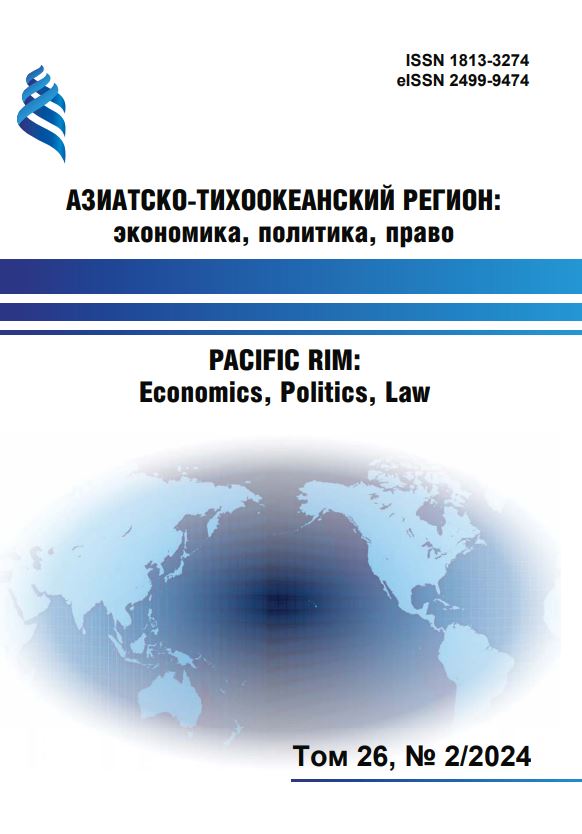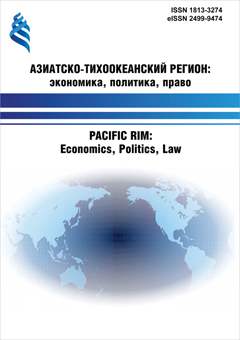Evolution of U.S. – Taiwan relations: history and contemporary context
DOI:
https://doi.org/10.24866/1813-3274/2024-2/107-127Keywords:
Taiwan, USA, Republic of China, relations, Kuomintang, Democratic Progressive Party, consensus, competition, weapons, semiconductorsAbstract
The article analyzes the specifics and dynamics of the development of U.S. –Taiwan relations from 1949 to the present. The study addresses the issue on four main fronts: global context, the U.S. – PRC – Taiwan triangle, bilateral relations, and domestic politics. The aim of this article is to highlight the key stages and features of the development of U.S. – Taiwan relations from 1949 to the present. To achieve this goal, the author focuses on the political and diplomatic interactions between the U.S. and the Republic of China, legal and institutional cooperation mechanisms. The author examines Taiwan – U.S. relations not in isolation but considering the influence of mainland China. The paper analyzes the views of Taiwan's administration not only on U.S. – Taiwan relations but also on the «cross-strait» issue. The research content also includes the examination of arms sales to the island, scientific and technical cooperation in the semiconductor industry, and Taiwan's integration into Amerocentric regional initiatives. A particular emphasis is placed on demonstrating the changes in the policies of the U.S., PRC, and Taiwan since 2016. In conclusion, the author identifies four stages of the development of U.S. – Taiwan relations, taking into account system-level and individual actor-level factors, as well as characteristics inherent to each of the identified stages. The conclusion also underscores the idea that the current state of U.S. – Taiwan relations is the result of the synergy of various factors of different nature.
Downloads
Downloads
Published
Issue
Section
License
Copyright (c) 2024 Владислав Владимирович Харичков

This work is licensed under a Creative Commons Attribution-NonCommercial-NoDerivatives 4.0 International License.



